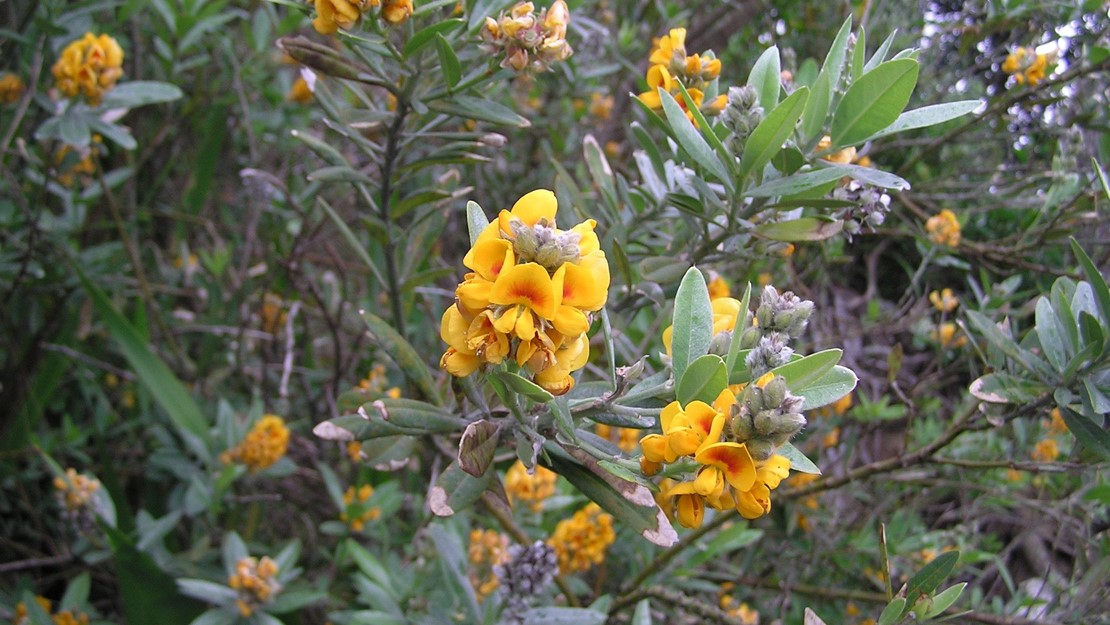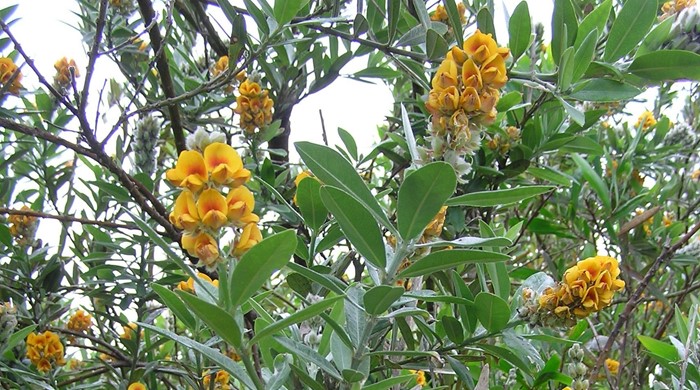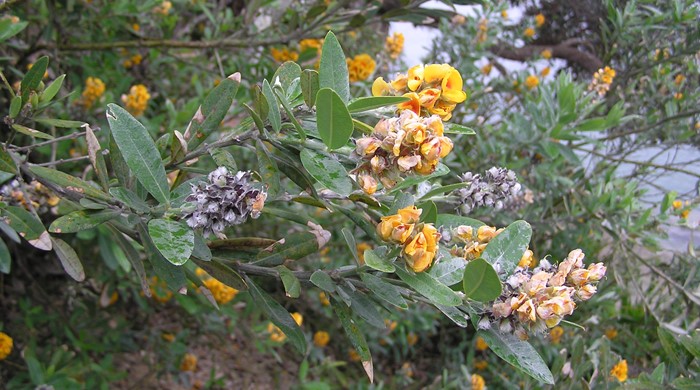Callistachys lanceolata
Oxylobium
Family: Fabaceae
Origin: Australia

Regional Pest Management Plan (RPMP) status
- Whole region — Sustained control
- Hauraki Gulf Controlled Area Notice pest
General description
Tall evergreen shrub < 8 m tall. Stems are angular and densely hairy. Leaves are narrow, oval, < 8 cm long, silky when young and smooth when mature. Flowers are yellow/orange, pea-like and borne in dense terminal racemes in spring. Seed pods are hard and are ribbed when mature.
What you need to know
To help protect our environment:
- You must not breed, distribute, release or sell oxylobium within the Auckland region.
- You must not plant oxylobium within the Auckland region, unless you are transferring an existing plant on your land to another location within the boundaries of the same property.
- You must destroy any oxylobium on land that you occupy if it has been planted in breach of the above rules and you are directed to do so by an authorised person.
Habitats
Shrubland, grassland, tussock, wetlands, wasteland, disturbed areas.
Dispersal
Seeds dispersed by water and movement of contaminated soil by livestock. Human-mediated dispersal through dumping of garden waste and movement of contaminated soil on machinery and vehicles.
Impact on environment
Competes with native short-stature plants. Nitrogen fixer. May facilitate invasion by other exotic plants.
Control
Site Management
Follow up treated areas 3 times per year. Encourage natural regeneration of native plants or replant treated areas where possible after 2-3 treatments to establish dense ground cover and minimise reinvasion.
Recommended approaches
Physical control
Method: Dig out.
Plant parts requiring disposal: Seeds.
Disposal options: Remove to greenwaste or landfill if practical.
Biocontrol
Biocontrol is currently not available for this species.
Community agrichemical control recommendations
No qualifications: Cut stump and paste freshly cut base of stems with metsulfuron gel or ringbark stem and paste with metsulfuron gel.
Basic Growsafe certified: Cut stump and spray freshly cut base of stems with 2g metsulfuron-methyl per 1 L of water.
Certified Handler/Experienced agrichemical user: Foliar spray with 5g metsulfuron-methyl per 10L of water and 20ml penetrant. Drill and inject trees with 5g metsulfuron-methyl per 1L of water if safe to do so. Drill 18mm holes (tangentially angled downwards) in a spiral up the trunk.
For 50mm stems drill one hole. For 100mm stems drill two holes. For larger stems drill holes 150mm apart.
Safety notes
Large trees must not be drilled that are closer than 1.5 times the height of the tree from paths, walkways and property.
Trees over 4 metres in height should be removed by a qualified arborist.
Caution: When using any herbicide or pesticide please read the label thoroughly to ensure that all instructions and safety requirements are followed.





